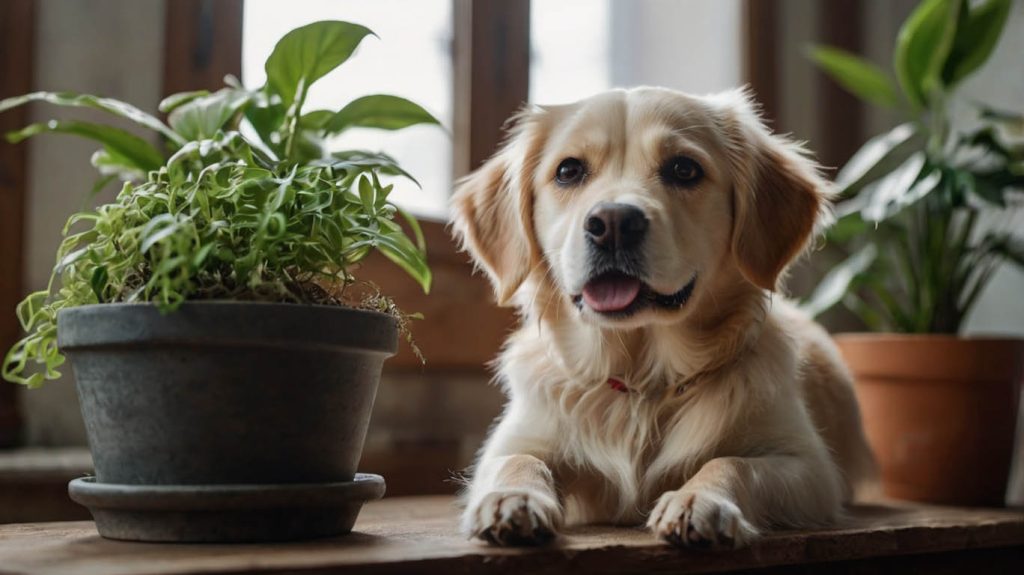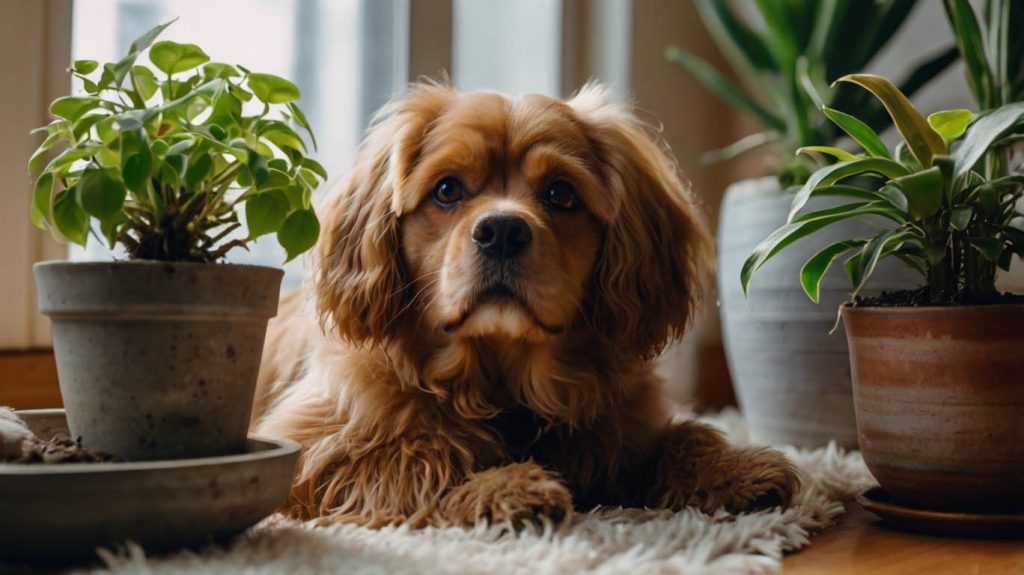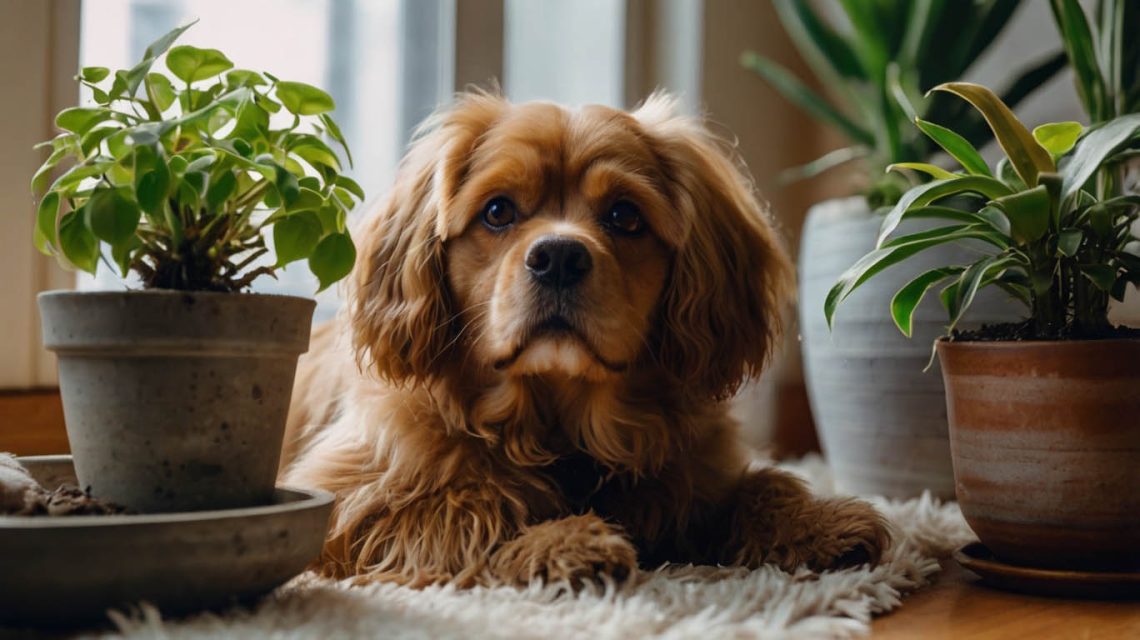A Pet Owner’s Guide to Dog Friendly Indoor Plants
Sarah had always envisioned her home as a lush, green oasis, a sanctuary filled with beautiful houseplants. Her dream became a reality, with elegant ferns and trailing vines adorning every sunlit corner. Then, a whirlwind of fluffy puppy energy named Leo entered her life. Suddenly, her carefully curated jungle looked like a minefield of potential dangers. A panicked search revealed that many of her favorites were toxic, forcing her to ask a difficult question: must she choose between her plants and her pet? The answer, thankfully, is a resounding no. The solution lies in deliberately creating a collection of beautiful and safe dog friendly indoor plants.
This is a dilemma that countless loving pet owners face. You want to enrich your living space with the beauty and air-purifying benefits of plants, but the safety of your curious canine companion is non-negotiable. This comprehensive guide is your complete roadmap to creating a home that is both stunningly verdant and perfectly safe for your four-legged family members, ensuring peace of mind for you and a healthy environment for them.
Why Choosing Dog Friendly Indoor Plants is Crucial
Before we explore the beautiful, safe options, it’s essential to understand the risks. A dog’s natural curiosity, especially during their puppy and adolescent years, often leads them to investigate the world with their mouths. To them, a dangling leaf or a pot of interesting-smelling soil is an open invitation to chew and explore.
Unfortunately, many of the most popular houseplants contain chemical compounds and crystals that are toxic to dogs. Ingesting these can cause a range of symptoms, from mild gastrointestinal upset to severe and life-threatening conditions. For instance, common toxic plants can trigger vomiting, excessive drooling, oral swelling, difficulty breathing, and even organ failure. Consequently, proactively selecting dog friendly indoor plants is not merely a preference; it is a fundamental pillar of responsible pet ownership. It provides the invaluable peace of mind that comes from knowing your pet is safe to roam and relax freely in their own home.

Our Top Picks for Dog Friendly Indoor Plants
Ready to build your pet-safe paradise? This curated list features gorgeous, resilient, and, most importantly, completely non-toxic plants certified as safe by the ASPCA. We have selected a variety of options to suit different light conditions and aesthetic tastes, proving that safety absolutely does not mean sacrificing style.
Spider Plant (Chlorophytum comosum): The Resilient Air-Purifier
The Spider Plant is a celebrated champion in the world of pet-safe greenery. It is incredibly easy to care for, thrives in a wide range of light conditions, and is a powerhouse air purifier. Its arching green and white leaves and the dangling “spiderettes” (baby plantlets) add a touch of whimsical fun to any space. Even if your curious pup decides to nibble a leaf, it will not cause them any harm, making it one of the very best dog friendly indoor plants for beginners and seasoned plant parents alike.
Boston Fern (Nephrolepis exaltata): For Lush, Feathery Foliage
If you crave a lush, classic, and voluminous look, the Boston Fern is a fantastic choice. Its dense, feathery fronds create a soft, vibrant texture that can liven up any room. These ferns love high humidity and bright, indirect light, which makes them a perfect addition to a well-lit bathroom or kitchen. Best of all, they are completely non-toxic, so you can confidently let their fronds drape from a hanging basket without a single worry.
Prayer Plant (Maranta leuconeura): A Pop of Colorful Pattern
The Prayer Plant is a true showstopper. Its magnificent oval leaves are adorned with intricate, artistic patterns in stunning shades of green, cream, and pinkish-red. Furthermore, it possesses the fascinating habit of folding its leaves upwards at night, resembling hands closed in prayer. This plant is a living work of art and a guaranteed conversation starter, all while being a perfectly safe component of your growing collection of dog friendly indoor plants.
Money Tree (Pachira aquatica): A Symbol of Good Fortune
Instantly recognizable by its signature braided trunk and cheerful, star-shaped leaves, the Money Tree is another excellent pet-safe option. Traditionally believed to bring good luck and prosperity, this plant is also remarkably easy to grow. It adds a touch of sculptural elegance to a room and is a fantastic non-toxic choice for a larger floor plant.
Haworthia (Zebra Plant): A Striking, Low-Maintenance Succulent
For those who love the modern, geometric look of succulents but worry about the toxicity of popular varieties like Jade, the Haworthia is the perfect solution. Its spiky appearance and bold, white “zebra” stripes are visually stunning, yet it’s completely harmless to pets. It requires minimal watering and enjoys bright, indirect light, making it a low-effort, high-impact plant. This is one of the most popular dog friendly indoor plants for any succulent enthusiast.
Parlor Palm (Chamaedorea elegans): For an Instant Tropical Vibe
You can bring the relaxing feel of the tropics indoors with the elegant Parlor Palm. This slow-growing palm has been a staple in interior design for generations for good reason. It is exceptionally adaptable to lower light conditions and is very easy to care for. Its graceful, arching fronds are non-toxic, allowing you to create that permanent vacation-at-home feeling without any risk to your dog.
Calathea Family (e.g., Rattlesnake Plant): A Masterpiece of Foliage
The entire Calathea family is a gift to pet-owning plant lovers. Known for their breathtakingly ornate leaves, these plants come in countless varieties, from the wavy-edged Rattlesnake Plant to the boldly patterned Pinstripe Calathea. They are all completely non-toxic and add an incredible decorative flair to your home.

Plants to Avoid: Common but Toxic Houseplants
Just as crucial as knowing which plants are safe is having a clear list of which ones to avoid or, at a minimum, place completely out of your dog’s reach. Many of the most common and widely sold houseplants are unfortunately toxic to dogs.
Why These Plants are Dangerous for Dogs
This is not an exhaustive list, but it includes some of the most frequent offenders found in homes and garden centers. Always perform a quick search to verify a plant’s toxicity before bringing it into your home.
- Sago Palm: Extremely toxic. Ingestion of any part, especially the seeds, can cause liver failure and is often fatal.
- Lilies (All Varieties): While famously toxic to cats, many lilies can still cause significant gastrointestinal distress and other issues for dogs.
- Snake Plant (Sansevieria): Mildly toxic. Ingestion can cause nausea, vomiting, and diarrhea.
- Pothos & Philodendron: Contain insoluble calcium oxalate crystals that cause intense oral irritation, pain, drooling, and vomiting.
- Dieffenbachia (Dumb Cane): Similar to Pothos, but its effects can be more severe, including oral swelling that can impede breathing.
- Jade Plant: Toxic to dogs, potentially causing vomiting, depression, and incoordination.
- Aloe Vera: The plant’s latex (a sap-like substance) is toxic and can cause vomiting and cramping.
Beyond a Safe List: Proactively Pet-Proofing Your Greenery
Even when your home is filled exclusively with dog friendly indoor plants, it remains a wise practice to manage the interactions between your pet and your greenery. A dog consuming a large quantity of any plant material can still suffer from a mild upset stomach.
Strategic Placement of Your Dog Friendly Indoor plants
The simplest way to prevent unwanted chewing is through smart placement.
- Go Vertical with Hanging Planters: This is the most effective method for keeping plants entirely out of reach.
- Utilize High Shelves and Ledges: Place smaller pots on tall bookshelves, mantels, or windowsills that your dog cannot access.
- Create Plant-Only Zones: Consider using a stylish baby gate to designate a specific room, like a home office, as your “jungle” that your dog can’t enter without supervision.
Using Deterrents and Positive Training
You can also actively teach your dog that plants are not toys.
- Bitter Sprays: A commercially available bitter-tasting but non-toxic spray applied to leaves can make them unappealing to a curious chewer.
- The “Leave It” Command: This is one of the most valuable cues in dog training. Practice rewarding your dog handsomely for ignoring a plant and looking at you instead. This positive approach is the best way to manage their curiosity around your dog friendly indoor plants.
What to Do If Your Dog Eats a Plant
Even with the best precautions, accidents can happen. If you ever suspect your dog has ingested any part of a plant (toxic or not), it’s important to act quickly and calmly.
- Remove Your Dog: Immediately guide your dog away from the plant to prevent further ingestion.
- Identify the Plant: If you are unsure what it is, take a clear photo of the plant. Knowing the species is critical information for your vet.
- Observe Your Dog: Watch closely for any symptoms like vomiting, excessive drooling, lethargy, loss of appetite, pale gums, or difficulty breathing.
- Contact Your Vet Immediately: Do not wait for symptoms to develop. Call your veterinarian or the ASPCA Animal Poison Control Center (888-426-4435) right away. They can provide immediate, expert, and potentially life-saving advice.
Creating Your Safe and Beautiful Green Oasis
Sarah did not have to abandon her dream of living in a green sanctuary. Instead, she thoughtfully rehomed her toxic plants with friends who didn’t have pets and began the exciting new journey of discovering the vast world of dog friendly indoor plants. Today, her home is more beautiful than ever, filled with elegant Parlor Palms, vibrant Prayer Plants, and whimsical hanging Spider Plants. And Leo can safely zoom around, tail wagging, without Sarah feeling a single moment of panic.
You can have this peace of mind, too. Building a home that is safe for your pets and beautiful for you is not about compromise; it’s a creative and rewarding endeavor. It’s about making conscious, informed choices that nurture both your love for nature and your deep love for your dog.


